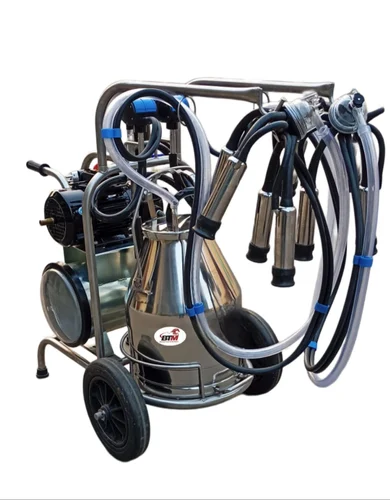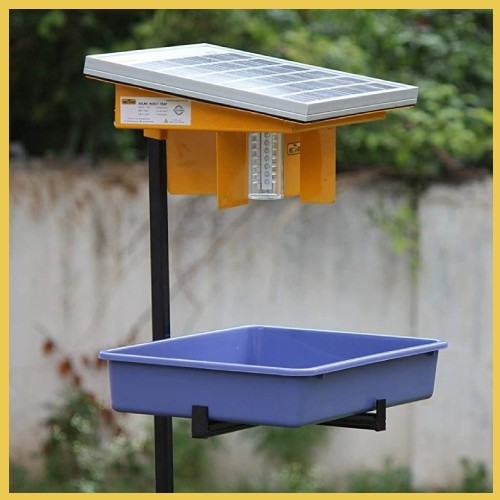Solar For Agriculture
Solar energy is a very important source of renewable energy that is available in abundance as compared to any other resource. The large magnitude of solar energy available makes it highly appealing for different applications across diverse verticals such as residential homes, industrial, manufacturing, agriculture, technology, etc.
The agricultural industry can benefit greatly from the use of solar energy in a number of ways, including the preservation of valuable water resources, decreased reliance on the grid, long-term power cost savings, and even the creation of new revenue streams.
Even though solar energy has been used in agriculture since the dawn of civilization, there is a growing desire to employ this energy source for a wider range of purposes for various purposes.
Scope of solar energy in Agriculture | Use of Solar Energy in Agriculture in India
Human activity is the primary source of climate change, as seen by the 1.3% yearly increase in carbon dioxide emissions from 2014 to 2019. The global energy market for new energy generation capacity is being led by the energy industry, which is taking responsibility by promoting technological policies and renewable technologies. With about 115 GW and 71 GW, respectively, the solar and wind energy markets had their highest year in 2020. By 2050, installed solar photovoltaic power generation would amount to 14,000 GW. Solar energy applications in agriculture and solar photovoltaics are appealing options for meeting household utility electricity needs, powering electric cars, and meeting heating and cooling needs.
Solar energy and power are the foundation of many technology utilised in the agricultural industry.
Uses of Solar Energy in Agriculture
It is one of the great inventions in the agricultural field. It is the most useful and valuable farming tool to make farming more comfortable and relaxing. Several minor and advanced activities were performed with various tools in farming and a power tiller was mostly used for minor agricultural activities. You can attach attachments like a cultivator, water pump, earth auger, boom sprayer, e- scooter, and trolley. This is one of the amazing innovations in the agricultural sector.
1.Solar milking machine

to simplify, expedite, and lower the cost of milking cows and buffaloes. Milking equipment that run on solar energy have already been embraced by a number of farms. These marvels of sustainable technology have not only made milking easier, but they have also cut down on the amount of time needed to milk each animal. Aside from the extra labour, it typically takes 30 minutes to milk one cow. One person may operate such a machine, which can draw milk in 8 to 12 minutes. Up to 20 to 30 cows’ milk can be extracted in an hour with this system.
2.Solar fencing systems
works like an electric fence which delivers a brief yet fierce shock when human beings or animals come in contact with the fence. It gives a deterrent effect while ensuring that no loss of life is caused. You can protect your farm without killing animals with the help of solar energy in agriculture.

3.Solar powered irrigation

using solar energy to irrigate crops. Solar irrigation has the potential to revolutionise Indian agriculture and improve the standard of living for small and marginal farmers. Batteries are used to store the electricity that is produced from solar energy. Solar pumps are manufactured by numerous firms. Solar pumps are devices that use solar energy to move water from reservoirs to agricultural areas. These are submersible solar pumps, regular motors, and portable solar pumps. Additionally, it enhances groundwater management.
4. Solar tractors
A solar tractor is a vehicle made especially to provide high tractive effort at low speeds in order to transport agricultural equipment or a trailer. The phrase is most frequently used to refer to a farm vehicle that supplies the traction and power needed to mechanize agricultural chores, particularly tillage, however there are now many more. Agricultural tools can be mounted on the tractor or pulled behind it; if the tool is mechanised, the tractor can also supply power.

5.Solar sprayer

One of the better models of a pesticide sprayer pump powered by a petrol engine is the solar-powered model. In addition to its numerous other uses, it is widely employed in the agricultural sector. This has greater benefits than sprayer pumps powered by petrol engines. Unlike a petrol engine pump, it is a pollution-free pump because its motor is powered by solar energy.
6 Solar insects and pest traps | Solar Application in Agriculture
The newest technology for UV lighting is used in solar bug traps. Flying adults and nymphs are drawn to a variety of wavelength frequencies. It will switch on and off on its own. With the use of this feature, pests and insects that harm crops can be captured and then dropped into the detergent solution that is exposed to the light. Thus, in that solution, those insects will perish.
Technology is developing daily and contributes to the advancement of the agricultural industry. Pollution is increased by technologies that use electricity, a non-renewable energy source. Because pollution causes climate change, which is unsuitable for both humans and plants and animals, pollution is bad. We must convert agricultural equipment from electric to renewable energy sources in order to prevent pollution of the environment.

